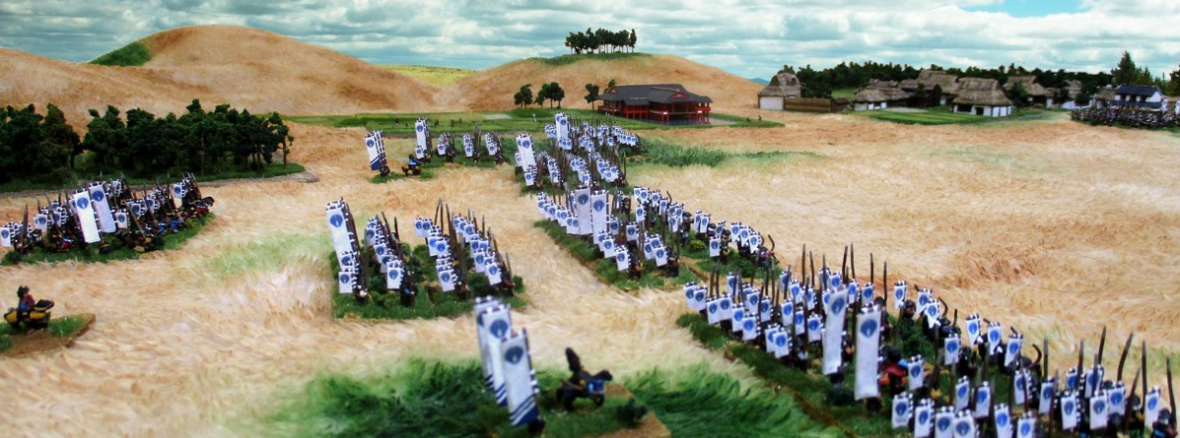One of the many incidents associated with the Sekigahara campaign is the attack on Ishida Mitsunari by members of the so-called ‘bushō’ faction’ led by Katō Kiyomasa and Kuroda Nagamasa. The story goes that they attempted to kill Mitsunari in Ōsaka out of a grudge originating from the war in Korea. Mitsunari fled Ōsaka and sought refuge in Fushimi. In one version, he escapes in a palanquin disguised as a woman (a scene borrowed and re-purposed by James Clavell in his novel ‘Shōgun’). Mitsunari flees to, of all places, the mansion of his mortal enemy Tokugawa Ieyasu. Ieyasu, rather unexpectedly, protects Mitsunari and negotiates a compromise with Kiyomasa and the others. This has led to a lot of confusion as to why he would do such a thing, involving convoluted explanations such as honourable adherence to laws of hospitality, or part of some great Ieyasu master plan.
The real reason is much simpler. It doesn’t make sense because it never happened. Ieyasu didn’t have a residence in Fushimi, but Mitsunari did. It was to his own residence that he took refuge. Some historians doubt whether there was even a physical attack at all, and instead believe that Kiyomasa and the others were, in fact, bringing a lawsuit against Mitsunari for mismanagement of the war in Korea. Of course, if found guilty, this would have been a death sentence, so the outcome would be much the same.
Mitsunari, who wasn’t in fact on particularly bad terms with Ieyasu at this time, asked his friend Ankokuji Ekei, of the Mōri clan, to mediate a solution. Ekei in turn approached Mōri Terumoto, who met with Ieyasu, who agreed to try and get the bushō to stand down. The upshot of the negotiations was that Kiyomasa et al would call off their attack (or lawsuit) and Mitusnari would retire from politics and go into self-imposed exile at his castle at Sawayama.
^Ishida Mitsunari smugly enjoying another (rare) positive portrayal in an English-language blog. (Figure by Zenit/Kensei)
So what’s this got to do with wargaming? Well, writing about this incident, modern historian Kasaya Kazuhiko points out that the original story about Mitsunari had appeared in the ‘Kinsei Nihonkokuminshi (近世日本国民史)’ by Tokutomi Sohō, written before the Second World War. Kazuhiko notes that he had never thought to question the account until he went looking for contemporary primary sources to support it. Whereupon he found that there was no mention of Ieyasu sheltering Mitsunari at all.
And this is typical of post-war historical research in Japan, particularly when it comes to military history. After the war there was a real aversion to anything to do with military matters, including in the study of history. Military history was inevitably linked with the militarism that had led Japan to a ruinous war, and had used history as a propaganda tool. When historians had to include details of battles etc in the new history they were writing, they just used the established material from the pre-war period, such as the battle studies undertaken by the Imperial Japanese Army General Staff. These accounts remained virtually unchallenged until the 1990’s.
Even then, the first historians to begin to question these accounts were independent researchers outside of academic institutions, such as Fujimoto Masayuki and Suzuki Masaya. And these usually concentrated on specific questions such as whether there was any ‘3-stage volley firing’ at Nagashino, whether Okehazama was actually a surprise attack or whether the Takeda cavalry actually existed etc. It’s only relatively recently that more systematic studies of the military history of the Sengoku period have been undertaken, and much of that pre-war material has been thoroughly revised. Unfortunately for wargamers, all those IJAGS studies of battles with their neat little blocks of definite numbers of men with their named leaders on well-defined maps and a coherent battle narrative have gone with it.
This means that the Sengoku period is a vibrant and dynamic field for historical research in Japan, but obviously it’s all hidden behind a formidable language barrier. Paradoxically, this research has resulted in a much less clear picture of the Sengoku period than had been assumed before, with much still to discover, and a lot of it is still as much about demolishing the old as building the new. How much of this will trickle through into English popular history and then into the wargames hobby remains to be seen. But embarking on a 5-year project to re-fight Sekigahara may not be a great idea right now. Just In case…

